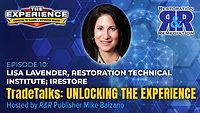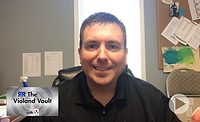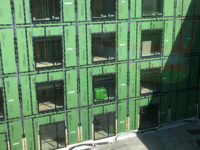Building a Legacy on Quality
A Q&A with Meyer & Sons










“The secret of success is to do the common thing uncommonly well.” – John D. Rockefeller, Jr.
Insulation sandwiched between the walls of buildings is as common as the presence of a front door on a home. Similarly, a home wouldn’t be a home without a little dust in the ducts, right? So for every business owner specializing in those areas, it’s important to choose a machine to meet your specific needs.
For Meyer & Sons, Inc., they hope the products speak for themselves.
Marketing coordinator Mitch Wolin and regional sales managers David Behm and Jeff Huebner spent some time talking to Restoration & Remediation about the legacy of Wm. W. Meyer & Sons, its history, success, and evolution to staking claim as a world leader in their industry.
First up, let’s talk a little bit about the history of Meyer & Sons, Inc.
Wolin, Behm & Huebner: Well, it started in 1933 as General Blower Company. Despite the Great Depression and WWII, William W. Meyer Sr. (or Bill) kept his business growing and expanding. He started by manufacturing centrifugal fans and added new product lines like insulation blowing machines and vacuum collection systems.
In 1945, it started flying under the “Meyer flag.” Today, we are in the third generation of ownership, and the company employs about 95 people.
What do you view as your biggest success as a company?
We approach it – what’s the best way for our customers to get the best use and life out of the machines.
One of the big strengths for Meyer is our core engineering group. On the industrial side of the business, we deal heavily in air systems and air movement. On that side of the business, it’s pretty technical and I think that expertise is applied to the commercial side of the business as well. One advantage that gives us is our competitors can come out with higher horse power, higher suction volume that they claim, but really where our vacuums stand apart is we can match everything our competitors do, but we actually have the efficiency to move more product through the hose to complete jobs faster and more efficiently and reduce cost on our customer end, where our competitors don’t have that knowledge and background on how to efficiently move air.
So what have you done to ensure your machines stay strong?
Anytime you’re dealing with insulation, it’s a pretty abrasive material. It has a tendency to wear things out quickly. On the industrial side of our business, we get into all sorts of applications – namely mining and mineral application processes that are very abrasive, so there are a lot of strategies that are put into play to reduce machine wear – like using abrasion-resistant steel. As a result, we can apply those same strategies to the commercial side of the business and that’s really one area where we can kind of set ourselves apart from other folks out there who may be using other materials.
How have you seen the restoration industry evolve?
The reality is, overall that hasn’t really changed that much. I mean, you’re kind of dealing with physics and Mother Nature has her limits so, when advancements are made, they’re pretty subtle. But again, we concentrate on building equipment for longevity as opposed to just moving air, so-to-speak.
The other one we haven’t really talked about is the air duct cleaning as well. Air duct cleaning cannot only be maintenance cleaning; it’s becoming more and more a factor in restoration. After they introduced a substandard, the guys going in and cleaning the buildings realized the air systems that were on at the time the event happened (mainly a fire or what have you), and just a lot of contaminants needed to be cleaned out. You know, you can clean out a whole building but you fire up the air system and you need to get rid of contaminants in the air system as well for the job to be thorough.
How do you test your machines to make sure they live up to your expectations?
We do a lot of work with Habitat for Humanity. We’ll go in and install the insulation ourselves with our employees and we use our machines there to test them out and be sure they’re running appropriately. We partner with a local Habitat group. Whenever the opportunity arises, we try to help out as much as we can. We purchase the insulation ourselves and take our machines there. We’ll take some of the employees there as well, not only to volunteer their time but to learn some of the machines to be sure our employees and staff are well-educated on our products and have first-hand experience. That way, when we’re talking to customers, our experience is actually applied to the machines and not just reading from the material.
Over the last decade, we’ve easily worked on 50 houses – five or six a year.
Do you have any examples of when Meyer products have been used successfully in the field?
We try not to do too many case studies because there is a lot of proprietary information our customers feel that they have and we try not to approach them in that way just to be sure they feel comfortable coming to us with any needs they may have. Usually, any case studies are going to be machines that have been running for 20 years and need parts, so we’ll have to custom-make parts or something along those lines. We at least get a couple calls a week for service on a machine bought 10, 15, 20 years ago. It’s those types of things that kind of get us compared to the “Maytag repair guy.” We have contractors who bought machines back in the ‘80s that are still working.
What sets you apart from the competition?
I think that’s one thing that really sets our company aside from all other companies: we don’t have a planned life span/limit, we don’t want these products to break down in a year or less, or two years. These are big capital investments and we try to make it as affordable as possible while getting longevity out of it. We make sure everything is top quality, best materials to last long. I think this company really benefits from the experiences we have and what we build today. We have historical data, records, drawing, engineering notes going back 50 years or more, we kept everything, so we can look back at history.
Looking for a reprint of this article?
From high-res PDFs to custom plaques, order your copy today!













